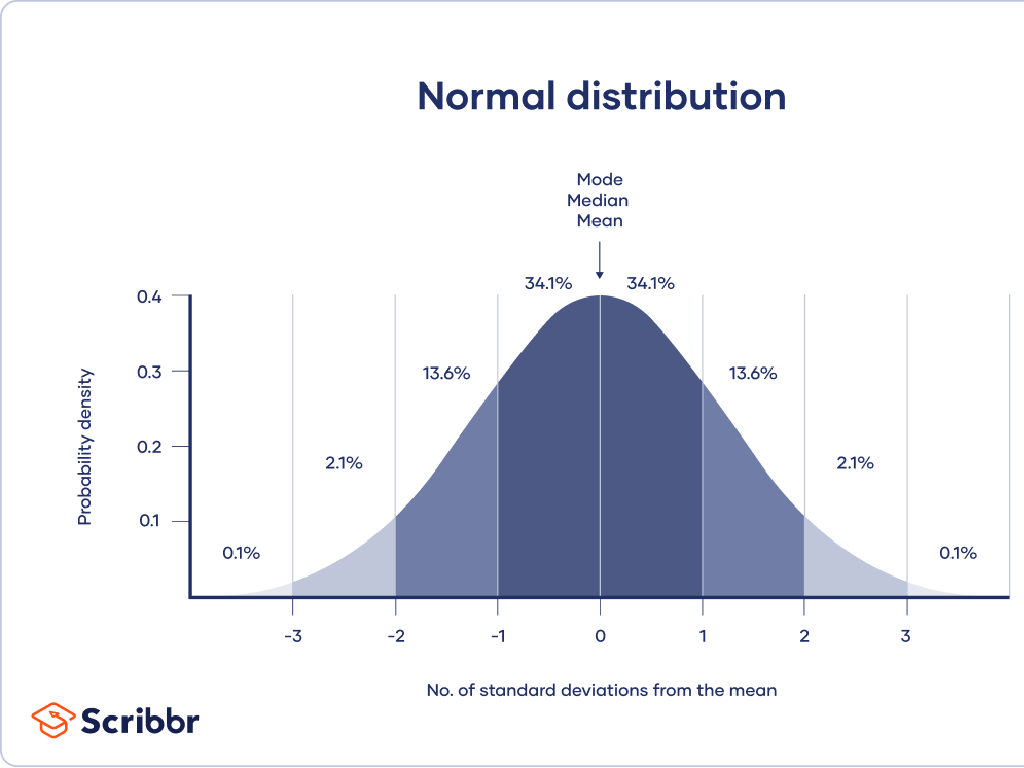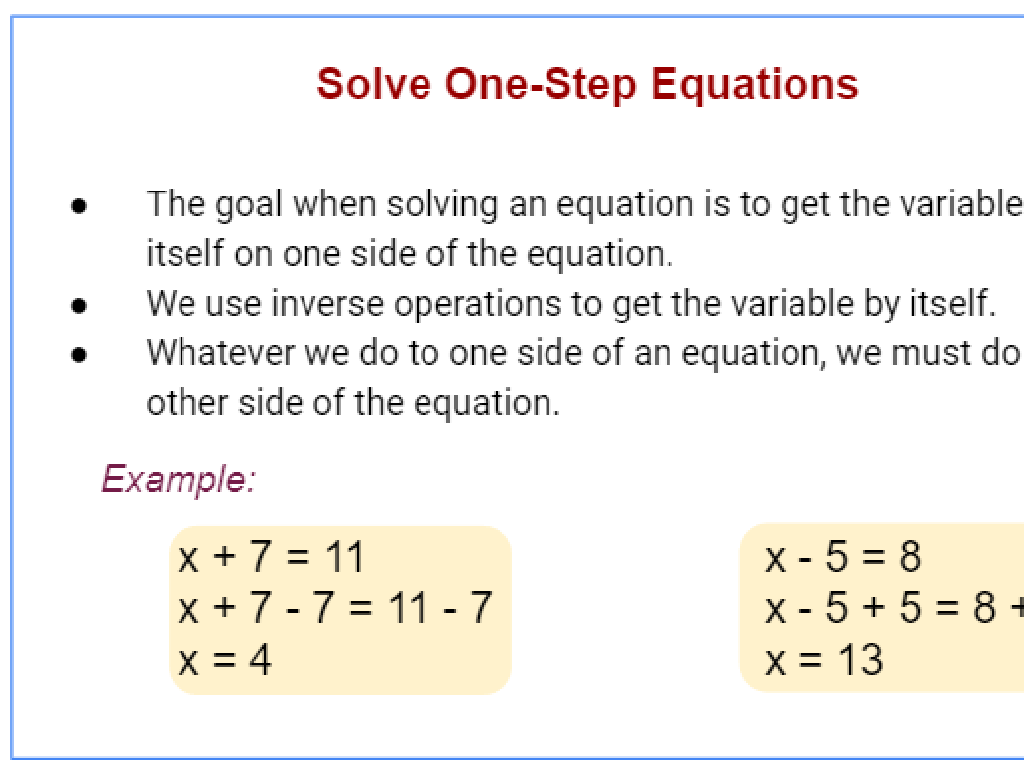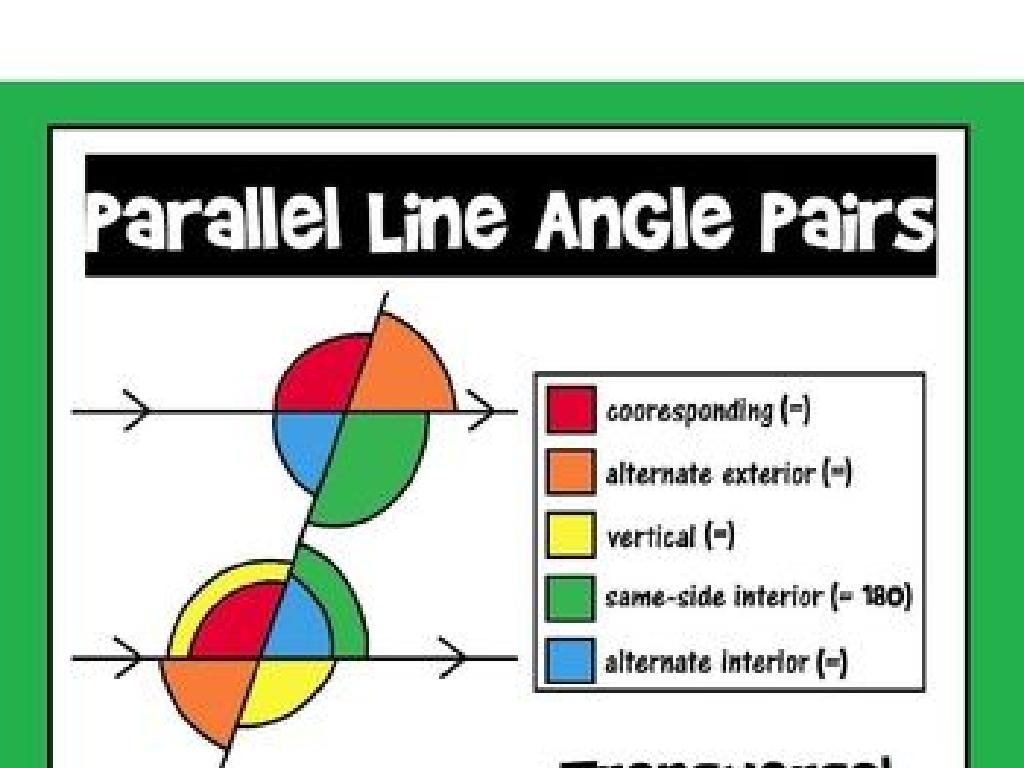Evaluate Linear Expressions
Subject: Math
Grade: Seventh grade
Topic: Expressions
Please LOG IN to download the presentation. Access is available to registered users only.
View More Content
Evaluating Linear Expressions
– Understanding variables/constants
– Variables represent numbers, constants remain the same
– Significance of expressions in math
– Expressions are fundamental in algebra, representing real-world situations
– Steps to evaluate linear expressions
– Identify variables/constants, apply operations in order
– Practice with real examples
– Use expressions like 3x + 2 when x=4 to calculate value
|
This slide introduces the concept of evaluating linear expressions, a crucial skill in algebra. Start by explaining variables as symbols that can represent numbers and constants as fixed values. Emphasize the importance of expressions in math as they model real-world scenarios and problems. Walk through the steps to evaluate expressions: identifying variables and constants, substituting values for variables, and performing arithmetic operations in the correct order. Provide practice examples, such as evaluating 3x + 2 for x=4, and encourage students to solve them. This will help solidify their understanding and prepare them for more complex algebraic concepts.
Understanding Linear Expressions
– Define a linear expression
– An algebraic expression with one or more terms, usually with a constant and a variable
– Linear vs. non-linear examples
– Linear: 3x + 2, Non-linear: x^2 + 3x + 2
– Identify expression parts
– Terms are the elements separated by + or -, coefficients are the numbers before variables
– Practice with examples
|
This slide introduces the concept of linear expressions in algebra. Begin by defining a linear expression as an algebraic expression that can have one or more terms, each consisting of a constant and a variable. Show examples to contrast linear expressions, which graph as straight lines, with non-linear expressions, which do not. Discuss the parts of a linear expression: terms, coefficients, and variables. Terms are the building blocks of an expression, separated by addition or subtraction signs. Coefficients are the numerical part of the terms that multiply the variable. Variables are symbols that represent unknown values. Conclude with practice examples to reinforce the concepts.
Evaluating Linear Expressions
– Understanding evaluation
– To evaluate means to find the value of an expression given the variable’s value.
– Substituting variables
– Replace each variable with its given number.
– Step-by-step example
– Solve 2x + 3 when x=4. Substitute x with 4, then calculate.
– Practice problem
– Try evaluating 3y – 5 for y=2 on your own.
|
This slide introduces the concept of evaluating linear expressions, which is a fundamental skill in algebra. Start by explaining that to evaluate an expression means to calculate its value when the variables are replaced by specific numbers. Emphasize the importance of following the order of operations when substituting and solving. Use the example 2x + 3 with x=4 to demonstrate the process step by step. After explaining, provide a practice problem for the students to try, such as 3y – 5 for y=2, to reinforce the concept. Encourage students to share their solutions and methods.
Let’s Practice Together: Evaluating Linear Expressions
– Evaluate 3x + 4 for x = 2
– Substitute x with 2: 3(2) + 4 = 10
– Evaluate 5y – 3 for y = -1
– Substitute y with -1: 5(-1) – 3 = -8
– Class Participation: Solve with me!
– Students will actively participate in solving the expressions
|
This slide is designed for active class participation. Start by demonstrating how to evaluate linear expressions with two examples. For the first example, show the substitution of x with 2 in the expression 3x + 4, leading to the answer 10. For the second example, substitute y with -1 in the expression 5y – 3 to find the answer -8. Then, invite students to solve similar expressions with you, guiding them through the process. This will help reinforce their understanding of evaluating expressions and give them confidence in their ability to solve them independently. Prepare additional expressions for students to practice and consider pairing students for collaborative learning.
Common Mistakes in Evaluating Linear Expressions
– Remember the order of operations
– Use PEMDAS: Parentheses, Exponents, Multiplication/Division, Addition/Subtraction
– Keep track of positive and negative signs
– Negative times a negative is positive, and vice versa
– Tips for double-checking your work
– Review each step, check with a peer, or use a calculator for verification
– Practice problems to reinforce learning
– Solve additional exercises to become proficient and avoid common errors
|
When teaching students to evaluate linear expressions, it’s crucial to emphasize the importance of the order of operations, often remembered by the acronym PEMDAS. Misplacing signs can lead to incorrect results, so students should be meticulous with positive and negative signs. Encourage them to double-check their work by revisiting each step, comparing with classmates, or using calculators. Provide extra practice problems to help them recognize patterns and solidify their understanding, reducing the likelihood of making these common mistakes.
Group Activity: Expression Evaluation Race
– Form small groups of 3-4
– Each group gets expression set
– Evaluate expressions quickly
– Use substitution to find the value of expressions
– First group with correct answers wins!
|
This activity is designed to encourage teamwork and quick thinking as students work together to evaluate linear expressions. Each group will receive a set of expressions and must collaborate to find the correct values. Emphasize the importance of double-checking their work before submitting. Prepare different sets of expressions for each group to ensure a fair challenge. Possible expressions could include simple substitutions like ‘2x + 3 when x=5’ or more complex ones like ‘4y – 2 when y=3’. The first group to finish with all correct answers will be declared the winner. This activity will help reinforce their understanding of evaluating expressions and give them an opportunity to apply their knowledge in a competitive and fun way.
Homework: Evaluating Linear Expressions
– Complete the Practice Sheet
– 10 Linear Expressions to solve
– Find the value of expressions like 3x + 2 when x=5
– Show all steps for each problem
– Write down each calculation to show understanding
– Submit by the next Math class
|
This homework assignment is designed to reinforce the students’ understanding of evaluating linear expressions. The practice sheet contains 10 problems that require students to apply their knowledge of substituting values for variables and performing the correct order of operations. Emphasize the importance of showing their work for each problem, as this demonstrates their thought process and allows for partial credit if the final answer is incorrect. Remind students of the due date and encourage them to seek help if they encounter difficulties before the next class. This will also serve as a good assessment of their grasp of the concept.
Conclusion: Mastering Linear Expressions
– Recap key evaluation steps
– Remember to substitute values and simplify.
– Emphasize consistent practice
– Daily practice strengthens understanding.
– Open floor for questions
– Clarify any doubts
|
As we wrap up today’s lesson on evaluating linear expressions, it’s crucial to revisit the main steps involved in the process: substituting variable values and simplifying the expressions. Remind students that becoming proficient with these skills requires regular practice, and encourage them to do so. Now, open the floor for any questions the students may have, and be ready to offer clarifications. This is an opportunity to address any lingering uncertainties and to reinforce their learning. Provide additional examples if necessary to ensure that all students are confident with the material covered.





